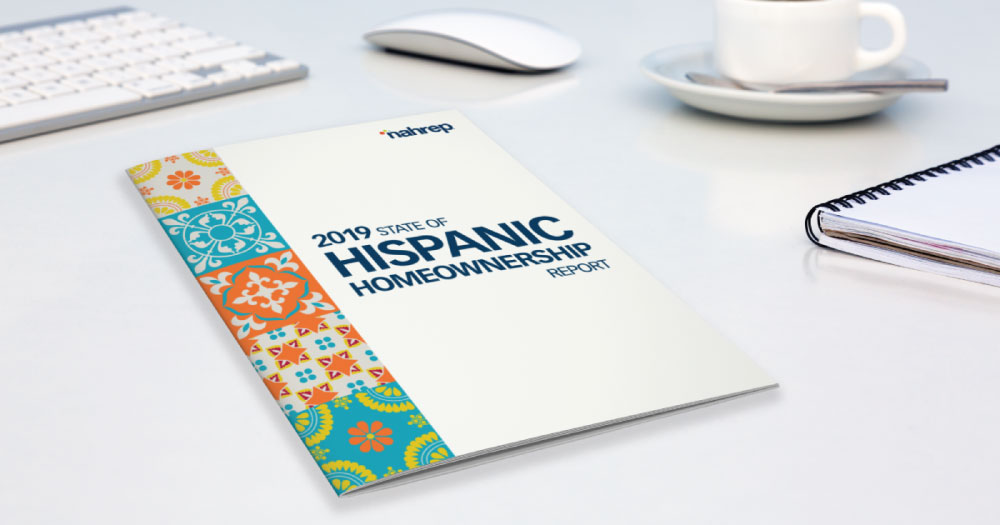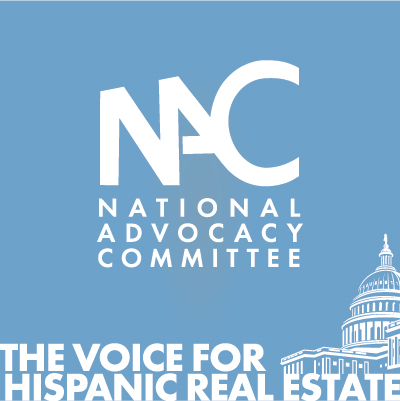NAC Blog: Time to Speak Up on the Community Reinvestment Act
Celebrating NAHREP familia, cultura, politics, and grassroots action
Que onda mi gente?!
I hope everyone is staying healthy as we weather this crazy coronavirus pandemic. My favorite quote I’ve heard so far is: “Wash your hands like you just cut up a bunch of jalapeños and need to take out your contacts.” I mean, that makes sense to me. Also, I’ve gotten tired of singing happy birthday while washing my hands and have instead started singing:
Voy a reir, voy a bailar
Vivir mi vida, la la la la
Voy a reir, voy a gozar
Vivir mi vida, la la la la
Eso!
That’s more or less 20 seconds.
The State of Hispanic Homeownership Report

For the past few months our team has been hard at work finishing up the State of Hispanic Homeownership Report, originally scheduled to be released next week. While our 2020 National Convention and Housing Policy Summit was cancelled, we are still planning on releasing the report, most likely around mid-April. I look forward to working with all of you to use the report as a tool to advance sustainable Hispanic homeownership. While we will not be engaging in our annual Capitol Hill visits this year, we would like to schedule a nationwide day of action where we can meet with our elected officials in their district offices to go over our report findings and policy priorities. More about that soon.
Some of the themes that you can expect to read in this year’s report revolve around the role that age plays in the homeownership rate of Latinos. Most variables that impact homeownership, such as credit scores, income, and savings, all tend to improve with age. Hispanics being so young explains a good part of the non-Hispanic White/Hispanic homeownership gap. I’m looking forward to hearing from all of you on whether this rings true with the communities you deal with every day.
Community Reinvestment Act (CRA)
Over the next few months, I will be doing a deeper dive on the policy priorities included in this year’s State of Hispanic Homeownership Report. First up: the Community Reinvestment Act (CRA).
What is CRA? CRA is a critical tool we’ve had in our community to expand access to credit to working class families. The Community Reinvestment Act (CRA) ensures that banks invest in the communities they do business in. These banks must pass a CRA exam by doing activities that fall under the program. Most importantly to our mission, these activities give CRA credit to banks for issuing mortgages for low- to moderate-income (LMI) borrowers and first-time homebuyers.
Why is this one of our priorities this year? The Office of the Comptroller of the Currency (OCC) and the Federal Deposit Insurance Corp (FDIC) have released a proposed rule that would expand which activities count for CRA credit. It would also apply only a single metric, the ratio of total investment divided by the bank’s assets, to determine CRA performance. While this doesn’t sound that bad, it has the potential to hurt LMI borrowers.
This single metric means that banks would simply need to invest a flat percentage of their money in low-income neighborhoods without specifying the kinds of investments. This will likely incentivize banks to do larger and easier projects, such as bridges or stadiums, instead of smaller, more complex activities, such as extending mortgages to working class people in those communities. Additionally, this has the potential of undermining the incentive banks currently have to develop constructive partnerships with community organizations. The very purpose of CRA was to increase access to credit for communities historically marginalized by the financial services sector and to encourage banks to meet the credit needs of everyday families.
Given that the proposed rule to modernize CRA is on the table right now, this will be one of NAHREP’s big fights of the year. We have a short period of time to make our voices heard and submit comment letters reacting to the new proposed rule. The deadline has been extended to April 8, 2020.
Why it matters: Many of you currently are able to sell homes and extend loans to low-to-moderate income Latinos because of CRA. It is important that we underscore the role that Hispanics play in the future of the housing market and how these changes will inhibit future growth.
We need to urge the OCC, FDIC, and Federal Reserve to:
- Defend the core principles of CRA that help first-time homebuyers.
- Move away from issuing a single metric to determine CRA, particularly ones that do not distinguish between homeownership, rentals and commercial property. A reliance on a single ratio of CRA performance could allow banks to pick and choose which communities to serve and which products and services to offer in those communities.
- Issue separate tests tailored for banks of different sizes and business models.
- Encourage more lending for first-time homebuyers as opposed to large investments such as bridges or stadiums.
If any of you, particularly lenders who currently work within the CRA offices of your banks, have thoughts about these changes, NAHREP will be submitting a letter by April 8th. Please send your thoughts to me at nlimon@nahrep.org or submit your individual letter directly to the Federal Register.
Un abrazo a todos familia. Los quiero mucho.

About Noerena Limón
Noerena Limón is NAHREP’s Executive Vice President of Public Policy and Industry Relations. Noerena heads the organization’s policy and advocacy efforts on issues ranging from homeownership, housing inventory, credit access and immigration.
Prior to joining NAHREP, Noerena spent six years at the Consumer Financial Protection Bureau (CFPB) and served as a political appointee under President Obama in the White House Office of Political Affairs.



